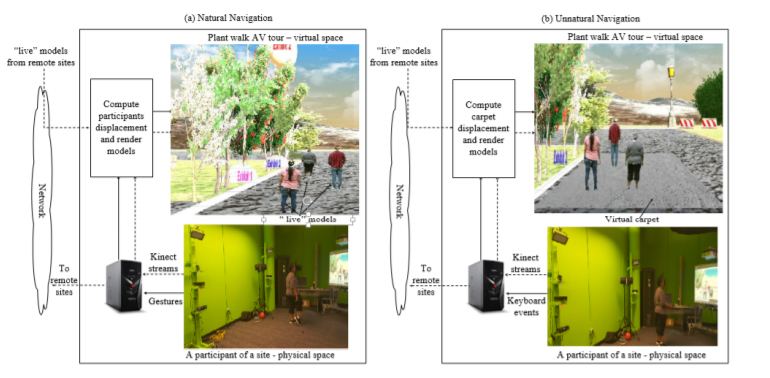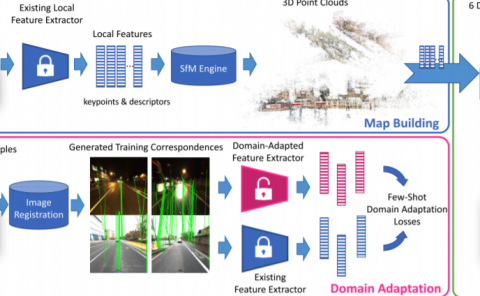Quantifying Group Navigation Experience in Collaborative Augmented Virtuality Tours
PubDate: October 2018
Teams: University of Texas at Dallas
Writers: Shanthi Vellingiri;Balakrishnan Prabhakaran
PDF: Quantifying Group Navigation Experience in Collaborative Augmented Virtuality Tours

Abstract
Unnatural, or “magic” navigation technique often exhibit more desirable characteristics than the natural navigation technique” [1]. In this paper, we evaluate the effectiveness of Natural (based on real-world gesture) and Unnatural (based on an event generated from an external device) navigation techniques in offering group navigation experience in a collaborative Augmented Virtuality (AV) tour. AV is a subcategory of Mixed Reality (MR); it merges real-world objects and their actions to a virtual world. This feature of AV facilitates visual recognition of participants and their actions during a tour. In addition, by monitoring participants’ actions and virtually accommodating them, a virtual group can stay spatially closer to each other during a tour; we term this as navigating-as-a-group”.
As user participation can be from several sites, network impairments among the participating sites can introduce intermittent navigation. As a result, a virtual group might appear virtually spread-out and not close-knit. Therefore, selection of a simple navigation technique that offers a better navigating-as-a-group experience in the midst of network impairments is essential. In this context, (i) with the help of the Hierarchical Position Discrepancy Model (HPDM) proposed in [2], we quantify the impacts of network delay on Natural and Unnatural navigation techniques, and (ii) evaluate the user experience scores with the results of HPDM to suggest the most preferred navigation technique for a group AV tour. Results on a 3-site, 3-user group AV tour shows that “unnatural navigation” technique is better in providing navigating-as-a-group experience.


